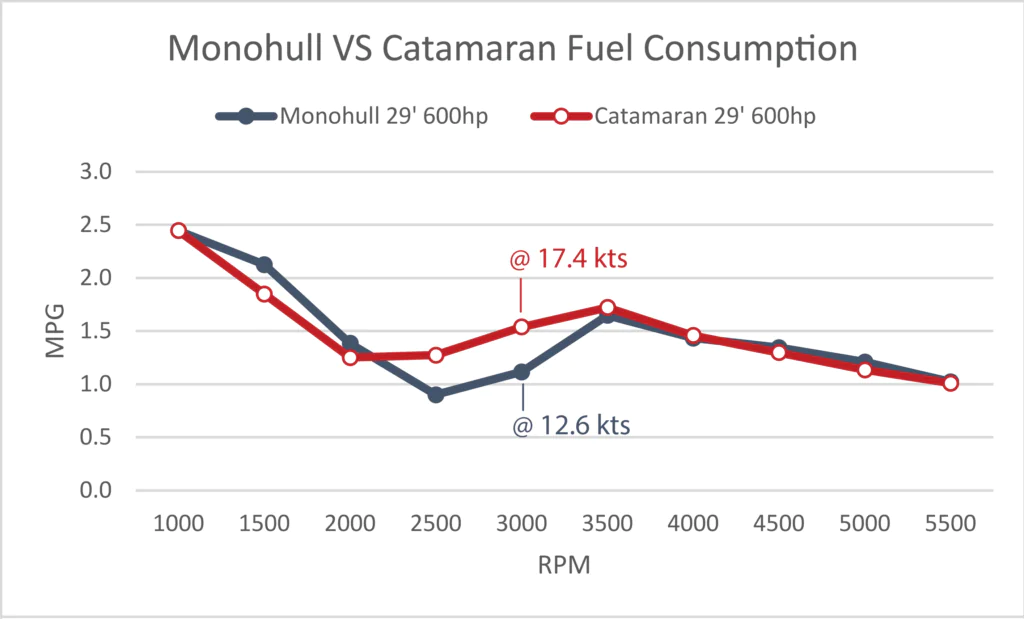
FUEL EFFICIENCY: Power Catamaran VS Monohull
Thanks to their fine hulls and narrow bow entry a power catamaran hull creates very little bow wake and experiences minimal resistance to get onto plane. The net result of these highly efficient hulls provide powercat owners with lower planning speeds and greater top end performance. This enhanced efficiency results in increased cruising range and significantly greater fuel economy. In comparison to traditional motor yachts, catamarans have a smoother rise in speed and steady fuel burn. In addition powercats experience minimal spikes in fuel consumption throughout the power band. As an added bonus, power catamarans require less throttle to achieve equivalent speeds. This pust less strain on engines, significantly increasing their working life and reducing maintenance requirements and potential failures.

” The power catamaran delivered 36% better fuel efficiency at 3000 rpm “
Thanks to tests performed by Yamaha outboards, the above chart demonstrates the outcome of a like for like test of a 29’ power catamaran vs a 29’ monohull. Both vessels supporting 2x 300hp Yamaha petrol outboards. This chart demonstrates the miles per gallon (MPG) fuel burn at equivalent rpms. What is not immediately obvious in this chart however is that at any given rpm the power catamaran is typically running at a higher speed, we have therefore noted the speeds achieved at 3000 rpm to demonstrate the difference. Across the speed range the power catamaran achieves a similar speed to the monohull at around 500 rpm less.
Why should I care about fuel efficiency?
So what does this really mean? Well let’s consider this data in real life scenario: Miami, Fl to Bimini in the Bahamas is about 50 Nautical Miles. Assuming you were wanting to make the trip and not break the bank you are motoring at 3000 rpm. You would make this trip in 4 hrs in a monohull burning 45 gallons of fuel, at $3.30/gallon that trip will cost you $148.50. In comparison you’ll do the same trip in a powercat in just under 3 hours using 33 gallons for $110. Or, if you are happy spending the $150, you’ll do the trip in just over 1 hour.
Learn more about the MAKAI M37 HERE>>